Precursor to the Mỹ Lai Massacre: 1968 Phong Nhị, Phong Nhất_15(2)
Chapter 15(2): Nguyễn Xu and Trần Văn Tha speak out
-Village veteran Nguyễn Xu
Nguyễn Xu was the top veteran of Phong Nhị.
I visited Phong Nhị in January of 2013. After interviewing the villagers for a week, I went to his home, with one day left before departing Vietnam. He was reading a book in his living room. When I asked him what book it is, he replied that it was the essays of Đoàn Duy Thành(1929~), deputy prime minister of Vietnam, which he wrote after retirement. He looked at peace as he was reading.
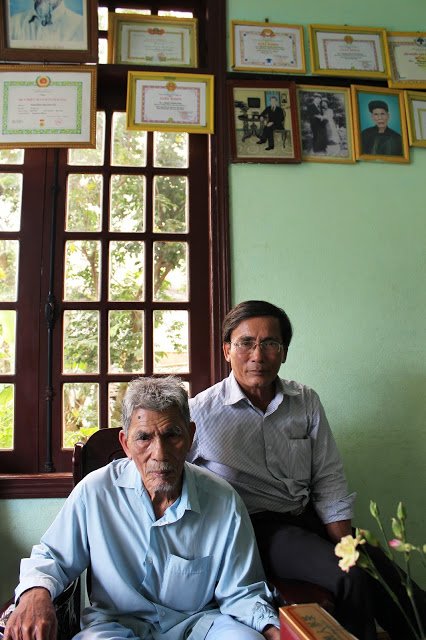
Nguyễn Xu (front), veteran from Phong Nhị and his second son, Nguyễn Thanh Cơ. Taken in February of 2014. Photograph by Humank
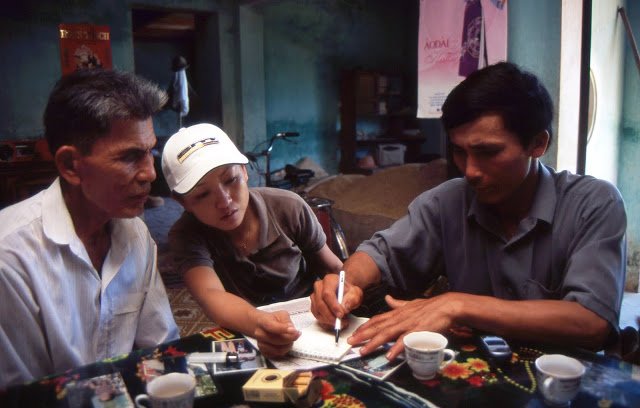
Nguyễn Xu (left) when I first visited Phong Nhị im May of 2000 and his second son, Nguyễn Thanh Cơ. In the center is Ku Su-jeong, executive director of the Korean-Vietnamese Peace Foundation. Photograph by Humank
He lived his entire life according to the revolutionary doctrines of Vietnam. He join the Indochina Communist Party in his teens, when Vietnam was still colonized by the French, and through various national liberation activities, both direct and indirect, he became an impactful figure within the village. “I knew from the onset that the Viet Cong would prevail,” he said, “even when Phong Nhị was practically occupied by the US and ROK troops, I never considered that defeat. I knew justice would be on our side.” I asked him, “How do you define justice?” “Ho Chi Minh was the very personification of justice. He partook in liberation movements since the French colonial period and laid the foundation for national reunification.”
When I first visited Phong Nhị in May of 2000, the very first person I met with was Nguyễn Xu. The Điện An’s People’s Assembly informed me that he would know the most about the incident. His second son Nguyễn Thanh Cơ always joined us. He interpreted on behalf of his aged father, who would have trouble enunciating his words. When we met in 2013, Nguyễn Xu told me of his US conspiracy theory. He believed that there really was no reason to believe that the ROK troops would slaughter Vietnamese civilians (Vietnamese people refer to South Koreans as Đại Hàn as well). He said it was the US’ fault, and the Korean troops had no choice but to do as they were told. But he did admit that he did harbor some degree of anger against the Koreans as well. In fact, when he heard that a daughter of a relative was married to a Korean man, he jokingly retorted, “Why is she living with the enemy?”
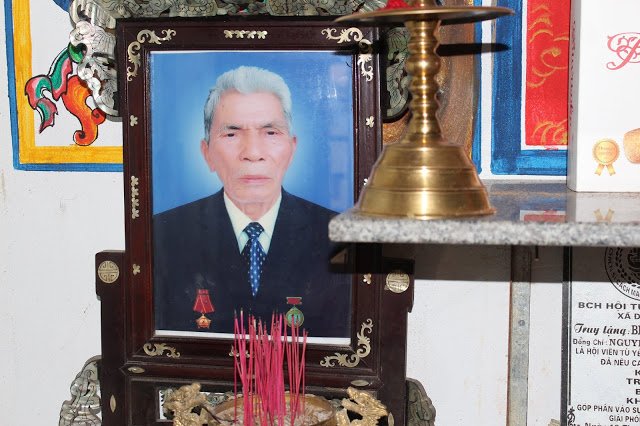
Nguyễn Xu passed away in 2016. His picture remains on their home shrine. Taken in February of 2018. Photograph by Humank
There was a marked difference in Nguyễn Xu’s attitude in 2014, however. In 2013, he stared at me straight in the eyes and spoke confidently, albeit slowly. When I visited him in 2014, he couldn’t look at me in the eyes. He stared off into space. He could barely speak or walk on his own. He was the only person in the village who could testify regarding the war against America as well as the war against France, but he was unable to speak. When I visited again at the end of January 2015, he was in his sickbed. By the time I visited in 2018, he had already passed away. It had been two years since he passed away in 2016.
Trần Văn Tha’s life in the mountains after stepping on a landmine
Trần Văn Tha went into the mountains harboring hatred towards the US and ROK troops, but it was after they both had already retreated. The US troops left much earlier, and the 2nd brigade of the ROK marines, which was based in Hoi An near the Quang Nam area, left the country in February 29, 1972 through the Port of Da Nang.
Trần Văn Th’s activities revolved around the Quế Sơn area, a jungle, more than half of whose area was mountainous, located Southwest of Phong Nhị and Phong Nhất. There were 40-50 liberation army soldiers. He started out learning self defense, arms handling and vehicle maintenance when he first joined in 1972 at the age of 15, but later became a sniper and learned how to dismantle mines as well.
He fought against the South Vietnamese army. They would wait until they could outumber the enemy before waging attacks. The AK47 was their main weapon, although they would sometimes use the B40 and the B41 rocket guns. They usually targeted commanders, signal corpsmen, forward soldiers, and those who set up landmines. Around twice a week, he would go down to the villages, searching for enemies to annihilate. He could still vividly picture those he shot to death, their bodies hurled over. Immediately after the shooting, he would witness the South Vietnamese soldiers let out their anger on innocent villages. He often hid in the caves in the mountains to protect himself against the enemy’s intermittent shelling.
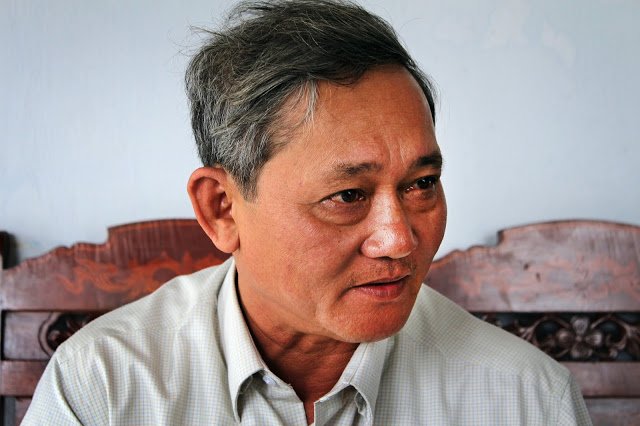
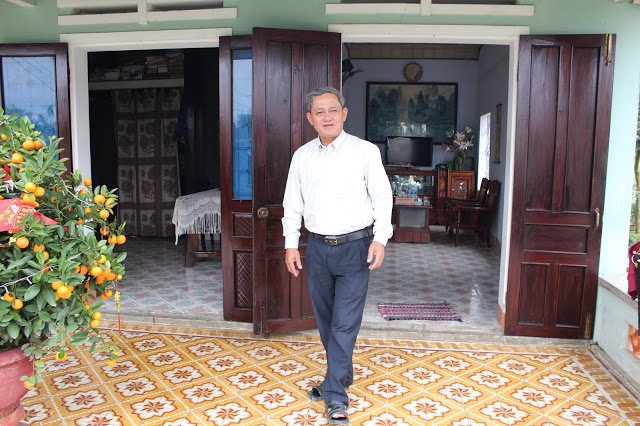
Trần Văn Tha, whom I met with in January of 2013 and again in February of 2014 at his home in Phong Nhất. Photograph by Humank
It made him miserable to kill or harm people with his guns or rockets. He truly dreaded doing so. But they were at war. His mother, younger sister, grandmother, paternal aunt, paternal uncle and nieces and nephews had all lost their lives for no good purpose. In order to put an end to this, he had to drive out the Americans and unify Vietnam.
They relocated their base several times. By the time the war came to an end in April of 1975, half of his corpsmen were gone. In the winter of 1974, while dismantling a mine, his comrade, Hứa Hiền lost his life writhing in agony. It was the saddest memory for him. Hứa Hiền was only 18 years old at the time. Another comrade lost both hands while using a gun that the enemy had left behind, because the gun exploded. It was Nguyễn Thanh cường, his direct report from Thanh Phong (current day Điện An). He was the first son of Nguyễn Xu, the veteran from Phong Nhị.
Trần Văn Tha pitched and slept in tents in the mountains. A piece of cloth between two tree trunks served as his beds. There were people who cooked for then. They raised vegetables called rau muống for sustenance. One time, he was stuck in malaria, bedridden for two weeks with a fever. He missed his family—his father and two younger sisters that would be awaiting him. He couldn’t just die there like that.
In 1975, Trần Văn Tha became a soldier in unified Vietnam, working to dismantle landmines in the dense jungles until 1986, when he retired as captain. Thereafter, he worked as a công an police in Điện An, and from 2004 to 2010, he served as the premier to the Điện An People’s Assembly.
- Written by humank (Journalist; Seoul, Korea)
- Translated and revised as necessary by April Kim (Tokyo, Japan)
The numbers in parentheses indicate the respective ages of the people at the time in 1968.
This series will be uploaded on Steemit biweekly.
Read the last article
Congratulations @humank! You have completed the following achievement on the Steem blockchain and have been rewarded with new badge(s) :
You can view your badges on your Steem Board and compare to others on the Steem Ranking
If you no longer want to receive notifications, reply to this comment with the word
STOPDo not miss the last post from @steemitboard:
Vote for @Steemitboard as a witness to get one more award and increased upvotes!